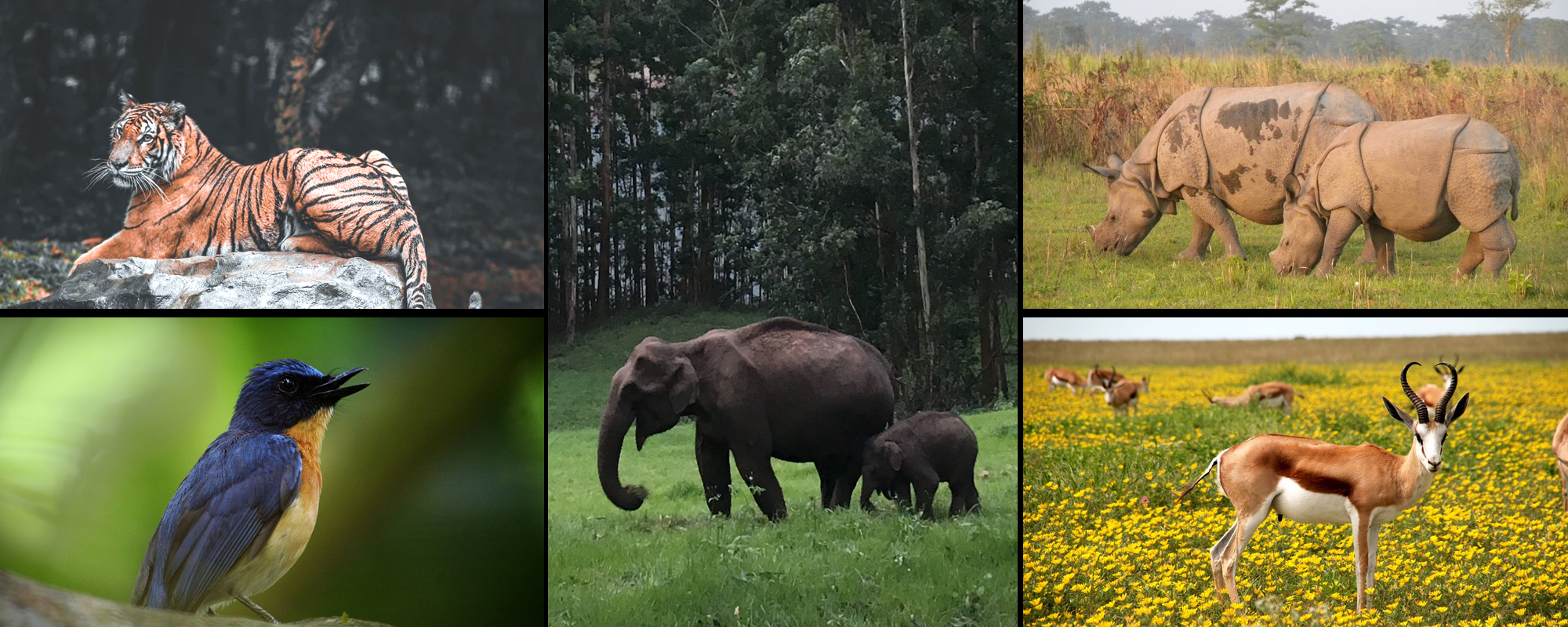
Taking a trip to any of the Seven Sisters in India is a delightful and memorable experience in itself, but one particular place in Manipur will leave you spellbound and in awe. KeibulLamjao National Park located in the Bishnupur district of Manipur is the only floating national park in the world with unique topographic features which attract nature enthusiasts, leisure travelers, and researchers in abundance. The park is an enchanting place to explore and behold and is also a significant part of Loktak Lake.
KeibulLamjao National Park is abode to many endangered and rare wildlife species such as a threatened species of deer called Brow Antlered Deer also known as Eld’s deer or the dancing deer which is known as Sangai by the locals. So, while on your way to explore the park, do not forget to take your binoculars and a camera for some stunning shots of the wild mammal and the landscape. The national is spread over in an area of 40sq. kilometers and inhabits several plants, animals, and bird species including the migratory birds. The gorgeous park is home to over 450 varieties of orchids and has an ideal climatic condition for over 100 species of aquatic flora and abundant species of birds.
KeibulLamjao National Park is made up of swamps with various floating masses of vegetation that have been shaped by the accumulation of organic dump and biomass with particles of soil that eventually became thick forming solid floating massed known as Phumdis in the local language. These masses float in the Loktak lake and are extremely thick. Some Phumdis float across the lake while some remain in their position with their roots attached to the ground beneath the water. The area was initially a wildlife sanctuary, however, after announcing that the Dancing Deer is an endangered species, the sanctuary was given the title of the National Reserve in 1977. Because of contravention and on local’s demand, the natural reserve has also been reduced, but the enthralling view of the phumdis in the pristine blue lake waters under the prominent blue sky is a sight that never can be forgotten.
LeersiaHexandra, Sing Kambong Zizania Latifolia (Manchurian Wild Rice), Phragmites Karka, WanaManbiCepithipedium spp., Saccharum Munja, NarengaPorphyrochroms, etc.
Mammals: Brow Antlered Deer, Hog Deer, Wild Boar, Large Indian Civets, Fox, Jungle Cat, Golden Cat, Bay Bamboo rat, Musk Shrew, Common Shrew, Flying Fox, Sambar, etc.
Birds: Lesser Skylark, Northern Hill Myna, Burmese Pied Myna, North Indian Black Drongos, Jungle Crow, Yellow Headed Wagtail, Ducks, Cranes, Wood Peckers, etc.
Amphibians & Reptiles: Channa Striata, Common Carp, Keelback Tortoise, Viper, Krait, Cobra, Python, Asian Rat Snake, Water Cobra, Russel’s Viper, Checkered Garter Snake, etc.
The temperature of the park ranges from 1.7 degrees Celsius in winters to 34 degrees Celsius in summers with the Indian Tropical Monsoon that brings with it an average rainfall of 1220mm. the wettest months are July and August and the driest months are February and March.
The best time to visit KeibulLamjao National Park is from October to April as the weather is pleasant and the water levels are suitable to explore the park.
Nearest Train Station: The nearest tarin station is the Dimapur Railway Station at about 220km of distance. Taxis and buses are available from the station to the park.
Nearest Airport: The nearest airport is the Imphal International Airport which is about 32km away from the national park. Visitors can avail cabs or public transport to reach the park.
Road Accessibility : The national park is well connected to a road network from all the major cities and places. The park can be reached from Imphal covering a stretch of 54km via NH2.
Copyright 2012-2022 Indiamap Digital Pvt Ltd. All rights reserved. Privacy Policy | Terms of Use